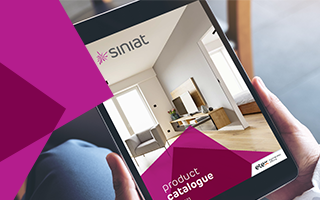Remember Florence Nightingale? The Lady with the Lamp?
She rose to fame for her part in the Crimean War in the 1850s, and is considered by many to be the founder of modern nursing.
But what can she teach us today?
Quite a lot, it turns out.
A growing body of evidence suggests that many of Nightingale’s ideas were spot on. Our modern understanding of evidence-based design in healthcare is reflecting
much of what she originally hypothesized, including the impact of light and noise on patients.
FLORENCE NIGHTINGALE ON NOISE….
In 1859 Nightingale recognised noise as a health hazard when she wrote: “Unnecessary noise is the most cruel abuse of care which can be inflicted on either the sick or the well.” [1]
A number of modern studies have highlighted the potential negative impacts of noise pollution in hospitals.
These include sleep disturbances, such as reduction of sleep depth, continuity, or duration; cardiovascular response, wound healing, and pain management.
Hospital noise also affects staff and visitors. For example, noise in hospitals has been shown to alter staff stress levels, impact job performance, generate annoyance, and cause an increased rate of burnout.
FLORENCE NIGHTINGALE ON DAYLIGHT
In 1863 Nightingale wrote about the benefit of daylight to patients.
In Notes on Hospitals she wrote: “The axis of a ward should be as nearly as possible north and south; the windows on both sides, so that the sun shall shine in (from the time he rises till the time he sets) at one side or the other. There should be a window to at least every two beds, as is the case now in our best hospitals.”
Mounting modern evidence has proved her theory to be right.
A 2001 study found that patients hospitalized for depression stayed an average of 3.67 fewer days if they were in east-facing rooms exposed to morning light, compared to patients in west-facing rooms with less sunlight.
A Canadian study of a cardiac intensive care unit suggested that female patients had shorter stays if their rooms had more sunlight. In the same study, mortality for both men and women was lower in sunnier rooms than in north-facing rooms (in the northern hemisphere – the equivalent of south-facing rooms in Australia)
EVIDENCE-BASED DESIGN
As hospitals built in the 1950s to 1970s have started to reach the end of their lifespan, architects and hospital administrators have increasingly looked to scientific studies and statistics in evidence-based healthcare design to inform renovations or rebuilds.
Evidence-based design involves the use of architectural methods proven to improve patient outcomes and staff wellbeing and retention.
Key recommendations often include designs that:
- Reduce noise
- Increase access to natural light
- Are ‘staff friendly’
- Replace multiple occupancy rooms with private rooms.
For more ideas and advice on Acoustic Design for Healthcare, download the free ebook from the Knauf 'How To' section on our website.







